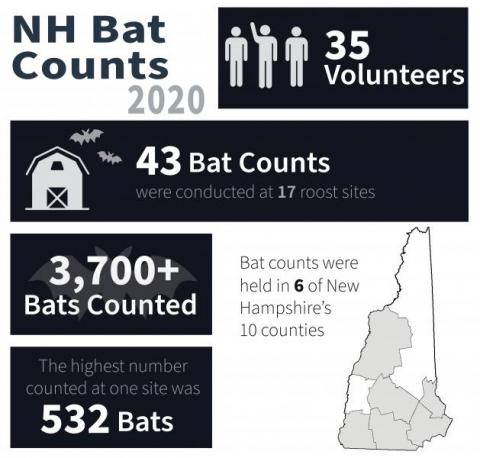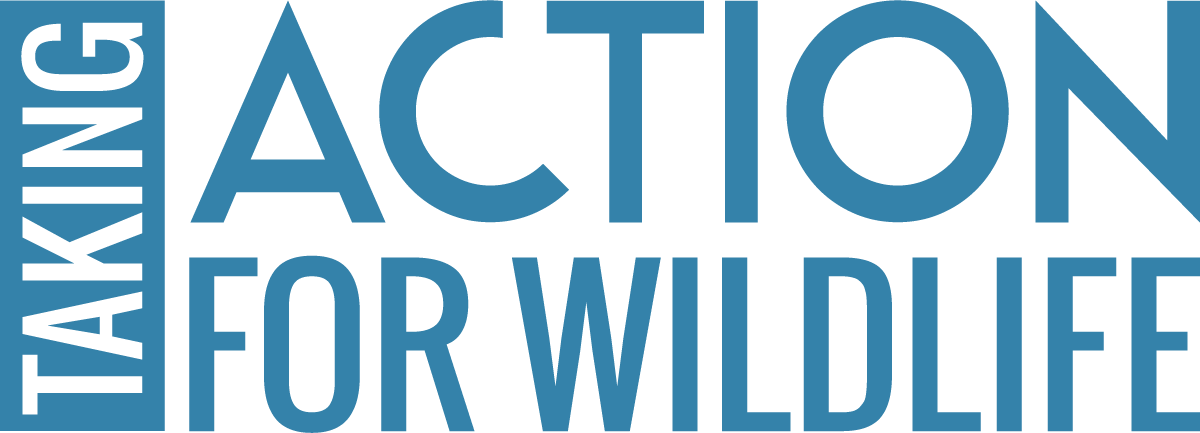NH Bat Counts: 2020 in Review

The end of one year and beginning of the next is often seen as a time of reflection, and that's definitely true for the wildlife biologists who lead the NH Bat Counts effort. One of the important ways we collect data about our state's bat species, NH Bat Counts engages citizen scientists in counting bats during the summer months. Despite a unique year where all trainings were virtual and volunteers had some restrictions on where they could count (on their own property) and with who (members of their household), 2020 was a great year for NH Bat Counts!
New Hampshire’s two most common bat species – the little brown bat and the big brown bat – use buildings as their summer roosts. Abandoned houses, barns, bat boxes, church steeples – and even currently-occupied structures – can provide a summer home to female bats and their young. Monitoring these maternity colonies can give us a good idea of how bat populations in an area are doing from year to year. Monitoring these colonies is more important than ever in the face of White-Nose Syndrome, a fungal disease that kills hibernating bats and has caused significant declines in bat populations throughout the region. Every summer, volunteers contribute to this monitoring effort by counting the bats that emerge from their barn, eaves, or bat boxes.
Counting takes place mostly in June and July, but some volunteers conduct counts later into the summer. Biologists spend the fall compiling and analyzing data, so by November and December we have a pretty good picture of how non-scientists all over New Hampshire helped contribute really useful information towards bat conservation efforts. And it's impressive! Volunteers with NH Bat Counts helped to count thousands of bats last year. Most of the places where bats are counted - barns, attics, bat boxes - occur on private land. In these cases, we only know the bats are there because of participation in this project by individuals who want to make a difference for New Hampshire's bats.

Looking ahead, we're excited about NH Bat Counts in 2021! For those individuals who don't have bats on your property and weren't able to count this year, we hope we'll be able to lift restrictions on counting elsewhere this year and have you join us. We're also want to visit some counting sites (if possible), are looking into the development of an online data form to make submitting count data easier, and hope to get more volunteers involved in counting bats all over New Hampshire! Help us spread the word by telling your friends and neighbors about the NH Bat Counts project.
SIGN UP FOR THE NH BAT COUNTS NEWSLETTER
to receive updates about the upcoming bat counting season,
information on training opportunities, and results from summer bat counts
By Haley Andreozzi, Wildlife Program Manager, UNH Cooperative Extension
Winter 2021 Taking Action for Wildlife Newsletter

